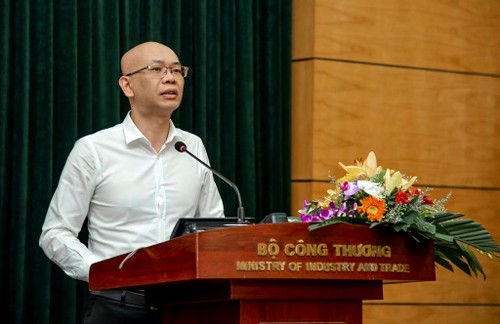 Tran Thanh Hai is Deputy Director of the Import-Export Department of the Ministry of Industry and Trade (Photo: Uyen Huong/BNEWS/VNA) Tran Thanh Hai is Deputy Director of the Import-Export Department of the Ministry of Industry and Trade (Photo: Uyen Huong/BNEWS/VNA)
|
Since the beginning of the year, Vietnam’s exports to FTA partners are no longer eligible for the Generalized System of Preferences (GSP), but must apply the EVFTA preferential tariffs.
2023 is the fifth year Vietnam has implemented the Comprehensive and Progressive Agreement for Trans-Pacific Partnership (CPTPP), with stricter requirements for goods exported to CPTPP markets.
FTAs entail commitments to remove or reduce import tariffs on goods by road map.
Tran Thanh Hai, Deputy Director of the Import-Export Department of the Ministry of Industry and Trade, said that signing FTAs has given Vietnam opportunities to expand its markets and improve its competitiveness with other economies.
“The competitiveness helps us boost exports and motivates us to constantly renew ourselves to improve quality and meet consumers’ needs,” said Hai.
The leather and footwear industry is committed to the high standards of new generation FTAs like CPTPP and EVFTA.
 Phan Thi Thanh Xuan is Vice President and General Secretary of the Vietnam Leather, Footwear and Handbag Association (Photo: tapchicongthuong.vn) Phan Thi Thanh Xuan is Vice President and General Secretary of the Vietnam Leather, Footwear and Handbag Association (Photo: tapchicongthuong.vn)
|
Phan Thi Thanh Xuan, Vice President and General Secretary of the Vietnam Leather, Footwear and Handbag Association, said, “Green production requirements for joining the supply chains are forcing domestic leather and footwear businesses to update information regularly.”
Xuan took the European market as an example and underscored the need to update every year information on product safety standards and production safety rules for export.
“Germany will soon introduce a new law requiring more third-party consultation for supply chains. This is obligatory for exporters to this market. All these requirements are challenging Vietnamese businesses, but also helping to improve the supply chain of the leather and footwear industry and help Vietnamese workers protect their rights and interests,” said Xuan.
Pham Minh Duc, Vice Chairman of the Vietnam Organic Agriculture Association, said that with their huge potential for exporting organic products, Vietnamese businesses need to improve product quality to meet the requirements of export markets.
“Vietnam's main agricultural exports have been certified organic in line with EU and US standards. But production output remains modest and most products are still being exported in the form of raw materials,” said Duc.
He said that a majority of businesses in the field have developed high-end, packaged, and branded products, but haven’t been able to reach out to consumers in the import markets.
“This means Vietnam’s organic agriculture still has untapped potential. The Association hopes the Ministry of Industry and Trade will help us develop a trade promotion strategy to gain greater access to the North American market,” according to Duc.
Under the national trade strategy until 2030, Vietnam targets export growth of 6-7% during the 2021-2030 period. This year alone, Vietnam’s exports are expected to grow 6%.